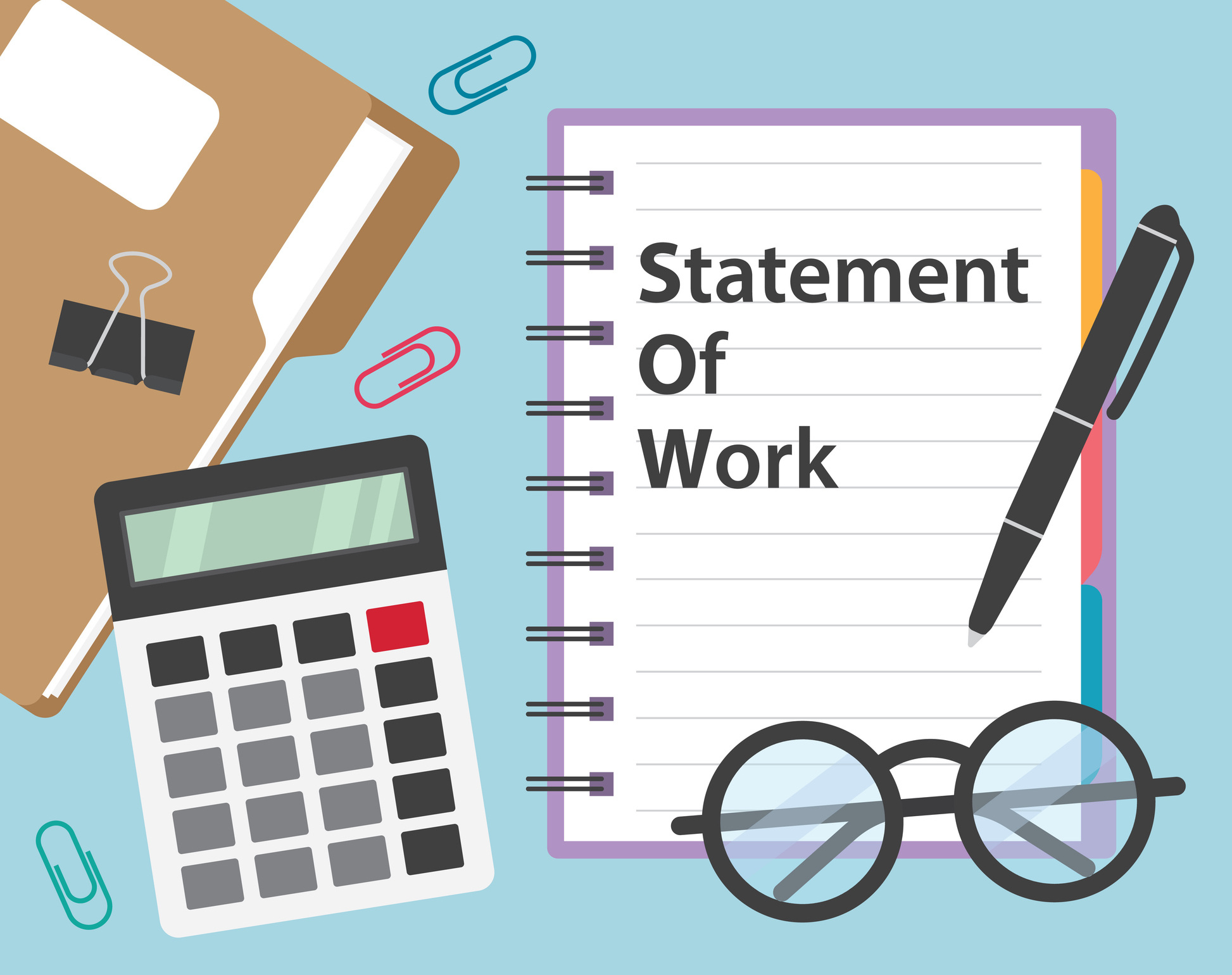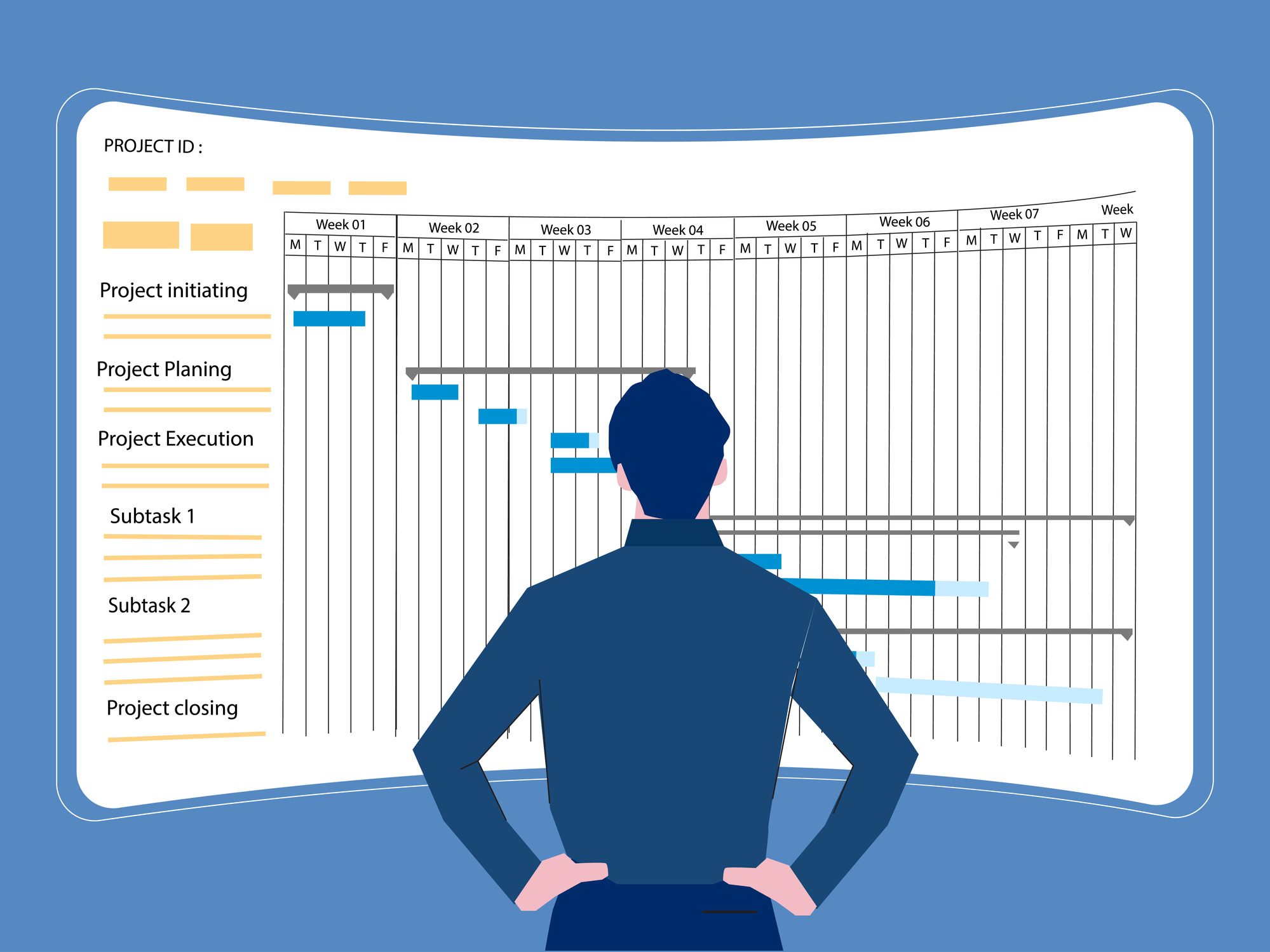SOW In Staffing: A Breakdown
Unlock the potential of your staffing strategy by understanding the intricacies of Statement of Work (SOW) in staffing.
7 min read
 Jack Peachey
:
Jun 26, 2024
Jack Peachey
:
Jun 26, 2024

Discover the importance of a Statement of Work in business. Explore real-world examples, guides and the steps to implementing a SOW in your business.
A Statement of Work (SOW) is a legally binding document that outlines a project's specific tasks, deliverables, and timeline, typically between a customer and a supplier. It is a formal agreement between two parties crucial in detailing the project objectives, requirements, and expectations to perform projects efficiently and reach strategic goals. This document ensures that all parties understand the terms and agreements of the project and are on the same page regarding the scope of work to be performed. A well-crafted Statement of Work establishes transparent expectations for both parties' roles and responsibilities while offering detailed guidelines for resolving any conflicts or challenges that may arise. This document additionally allows parties continual access to the information for easy reference.
The SOW is likely the first document you create to set the foundation for the project before it initiates. Depending on the project's scope, it will presumably vary in size and level of detail. It will include information such as project deliverables, timeline, budget, and specific terms and conditions. When crafting an SOW, it may be helpful to use a template to ensure that the necessary aspects of the project are included. Most templates include a glossary of terms, background information, payment methods, and alternate success plans. Various free and paid-for platforms offer online templates. By establishing a detailed plan, both parties can reduce hidden costs or challenges throughout the project, providing a clear and transparent roadmap for success.
In summary, it is essential to profoundly understand the components that create a thorough SOW before negotiating contracts with suppliers or customers. Confirm that each party formally reviews their roles and responsibilities within the document before the agreement to ensure they are comfortable and understand all aspects outlined before commitment, fostering a sense of responsibility and accountability.
While the SOW is a critical aspect of all contracts, not all documents will contain the same information and level of detail. However, most documents will contain standard content that covers the basic requirements for an explicit agreement. A comprehensive SOW should include the following content:
Project Overview: In the introduction, clearly explain the reason for forming an agreement. This will help both parties understand the necessity and benefits of the project. The section should also include essential details about the project, not presented as a list of tasks or objectives. It should be a detailed summary of the project overview, answering questions about what the project will accomplish, who is involved, and why the project is required.
Scope of Work: This section clearly outlines the tasks that need to be completed, the expected deliverables, and timeline for project completion. This section can be written as a list of steps or in a simple design including deliverables, a timeline, goals and reports.
Task List: It is crucial to effectively manage all tasks throughout the project, especially when collaborating with an external team. Breaking down the larger project into individual tasks and actions is critical to ensuring all team members are aligned and understand their responsibilities. These actionable steps are vital to the project's success and must be clearly outlined for everyone involved.
Project Schedule: The project schedule is a crucial element that clearly outlines a detailed timeline of milestone events and deadlines from project initiation to completion. It specifies when and how work will be completed as well as who will be responsible for completing the tasks efficiently. This section prioritizes time as a significant factor, considering the duration of each milestone and the overall project timeline. With time playing a vital role in project pricing, understanding the project's duration upfront is essential to minimizing costs. By establishing a well-structured schedule, teams can ensure tasks are completed promptly and in accordance with the project requirements.
Project Deliverables: Defining the end goal or final product is crucial when delegating tasks to the other party. By outlining clear and detailed objectives, the document provides a tangible target to strive towards, ensuring that standards and requirements are met. These goals should be meticulously outlined, including deadlines, specific requirements, and task checklists. While this section is typically established at the project's onset, it may require updates throughout the project's duration to stay aligned with evolving needs and expectations.
Project Management: Most details are clearly outlined throughout the SOW document, so the project management section considers some leftover administrative information. This section acts as a final touchpoint to ensure that both parties agree upon and define all logistical aspects of the project. By incorporating essential elements like payment methods, reporting procedures, and terms and conditions, both parties will understand the project comprehensively.
Success Criteria and Project Termination: This concluding section outlines the steps to take once the project reaches its completion, including who has the authority to approve and sign off on the final deliverables. It also guides transitioning the project to its next phase or wrapping up loose ends. By clearly defining the process for project termination, both parties can ensure a smooth and successful conclusion to the project, setting the stage for future collaborations.
Many elements of an SOW aren't included in this post, such as acceptance criteria, terms and conditions or project budgets. However, it is important to remember that more detail upfront can reduce the risk of hidden challenges that may burden business objectives in the future. Thus, having more information upfront is better strategically. By including all these elements in the SOW, the supplier and vendor relationship can continue to be strong and meet project requirements and expectations.
Different Types of Statements of Work
Now that the elements of an SOW have been explained, it is important to consider how to write the document and which type of SOW to use. There are three common types of SOW, which include:
Design SOW: This type of SOW is typically the most specific and detailed document outlining a design project's scope, objectives, and deliverables. It's a roadmap that includes tasks to be completed, timelines, goals, and responsibilities for each party involved. The document's detail is intentional, providing a clear direction and leaving little room for ambiguity. The goal of this SOW is to produce a very specific final product for a customer.
Level of Effort SOW: This contractual agreement is determined by the amount of time and resources to be expended rather than specific deliverables. This means the SOW can come with variable costs based on units expended or effort to complete a task. This approach focuses on offering ongoing service or support over an extended duration, with workers usually operating hourly. As workers put in more hours, the company pays accordingly. While workers can determine their time commitment, it's important to note that the company retains the majority of control in this setup, ensuring a secure working environment.
Performance-based SOW: This type of SOW allows for flexibility for the contractor or alternate party, as it emphasizes performance and results. While the document mainly focuses on performance timelines and desired goals to be achieved, the specific methods of the project are often left to the other party to determine. The company still achieves its desired outcomes, allowing the other party to create its guidelines and strategies.
These are just a few examples, and the type of SOW used can vary depending on the industry and the specific project requirements. A business must determine which outline will more accurately reflect strategic objectives.
Now that a foundation for understanding the components of a SOW has been created, the next step is formally crafting the document. Creating a Statement of Work involves but is not limited to the following steps:
Define the project scope: Clearly outlined are the project's tasks, deliverables, and objectives, and it is crucial to provide a detailed and comprehensive breakdown of every aspect to ensure clarity and understanding among all parties involved. This includes clearly defining the specific tasks that need to be completed, outlining the expected deliverables in terms of quality and quantity, and establishing the overarching objectives that the project aims to achieve. Articulating these key components guarantees all stakeholders can align efforts towards a common goal and work towards successful project completion.
Identify the stakeholders: Identify critical stakeholders involved in the project, including team members, clients, vendors, and any other relevant parties. Clearly outline their roles and responsibilities within the project, specifying tasks, decision-making authority, and communication channels.
Gather requirements: Begin by collecting all essential details about the project requirements, including specific tasks, desired outcomes, and key performance indicators. It is crucial to understand the project scope, objectives, and deliverables to ensure alignment with expectations. Additionally, gather information about the timeline for project completion, including milestone dates and deadlines for each task. Understanding the time constraints will help in planning and executing the project efficiently. Lastly, gather information about the budget allocated for the project, including resources, materials, and any additional costs that may arise.
Draft the SOW: Once all the necessary information has been gathered, draft a detailed SOW encompassing all relevant sections mentioned above. This document serves as the blueprint for the project, outlining the scope, objectives, deliverables, timelines, and responsibilities of all parties involved. Organize and present these details clearly and concisely to ensure alignment, clarity, and accountability throughout the project lifecycle. With a well-crafted SOW, all stakeholders can confidently move forward, knowing that expectations are clearly defined and objectives are set for achievement.
Review, Revise and Obtain Approval: Have all stakeholders review the SOW draft and make any necessary revisions or clarifications. Once the SOW is finalized, obtain approval from all parties involved to ensure everyone is in agreement.
These steps will help ensure the SOW accurately reflects the project requirements and sets clear expectations for all parties involved.
Although the benefits may seem immense for creating an SOW, businesses often face common pitfalls that hinder the effectiveness of the document. Some of these pitfalls include:
Ambiguous language: Unclear and ambiguous language in a SOW can be detrimental to an agreement, as it opens the door to misunderstandings and potential disputes. When details are unclear, it becomes challenging for all parties involved to align their efforts toward a common goal. Vague or misleading language can lead to confusion about responsibilities, timelines, and deliverables, ultimately impacting the project's success.
Incomplete information: Incomplete information can lead to misunderstandings and inefficiencies in project execution. Without all the necessary details, stakeholders may struggle to understand their roles and responsibilities clearly, leading to confusion and potential disagreements. Additionally, missing information can result in delays as parties try to gather the necessary details during the project, causing timeline setbacks and overall progress.
Lack of specificity: Lack of specificity in outlining requirements and expectations within a SOW can result in misinterpretation and confusion among stakeholders. When details are left vague or open to interpretation, it becomes challenging for all parties involved to align their efforts toward a common goal. This lack of clarity can lead to misunderstandings about roles, responsibilities, timelines, and deliverables, ultimately impacting the project's success.
Scope creep: Scope creep occurs when the project scope expands beyond its initial boundaries without proper evaluation and approval. This can lead to budget overruns, timeline delays, and resource constraints, ultimately impacting the project's success. Stakeholders must closely monitor any changes to the project scope and ensure they align with the project's objectives and constraints.
Failure to address risks: Failure to address risks can have detrimental effects on a project's success. Not incorporating appropriate risk mitigation strategies leaves projects vulnerable to unexpected challenges and setbacks. These risks can range from budget overruns to timeline delays, ultimately jeopardizing the project's objectives. It is crucial for stakeholders to proactively identify potential risks and develop strategies to mitigate them effectively.
The Statement of Work is a fundamental aspect of most contractual agreements. With this document's completion, approval, and implementation, you are setting your business on the right track toward success.

Unlock the potential of your staffing strategy by understanding the intricacies of Statement of Work (SOW) in staffing.

Flexible staffing solutions using Statements of Work (SOW) are revolutionizing the staffing industry by offering unmatched efficiency and...

Streamline your staffing process and maximize efficiency with a well-crafted Statement of Work (SOW).